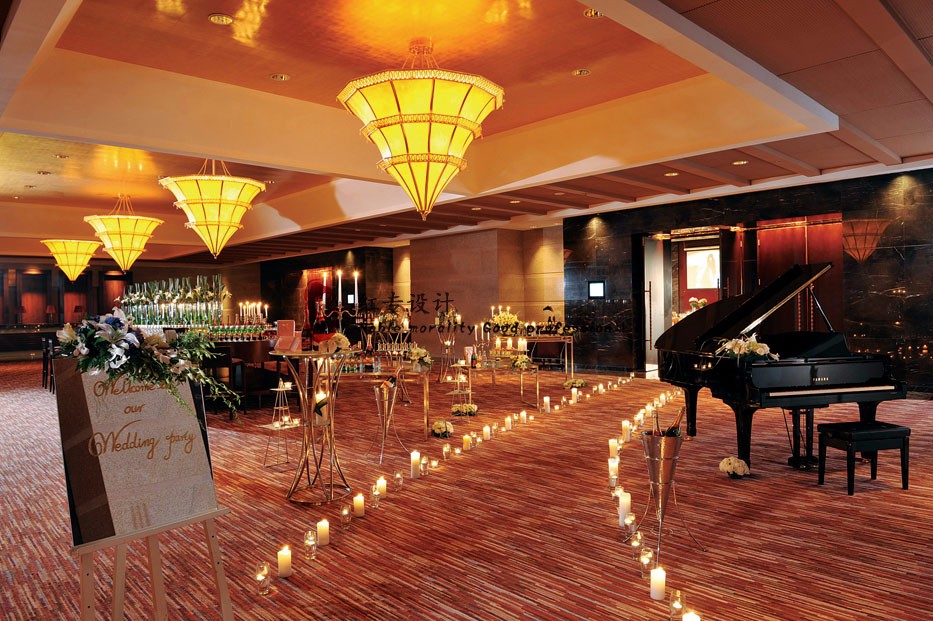WHY Hotel WEI architectsELEVATION WORKSHOP
2015-12-28 20:00
架构师提供的文本描述。为什么酒店是一个温泉酒店,位于北京的东北郊区,北京后院。Elev/魏建筑师最初被雇来翻修现有的20个房间,并在现有停车场的基础上增加7个新单元,对酒店的卡通主题没有任何重大改变。然而,为什么酒店在三十出头就成了一群大胆的商人:一旦客户和建筑师之间建立了开放的沟通,他们很快就同意将项目从一家以卡通为主题的农业风格酒店转变为一家以设计为中心的精品酒店,由一片美丽的竹林统一起来。
Text description provided by the architects. WHY Hotel is a hot spring hotel located in the northeast Beijing suburb of Peking Backyard. ELEV/WEI Architects was initially hired to renovate an existing structure of 20+ rooms and add seven new units on top of an existing parking area, without any major changes to the cartoon theme of the hotel. However, the owners of WHY Hotel are a group of daring businessmen in their early thirties: once open communication was established between the clients and architect, they quickly agreed to transform the project from a cartoon-themed agritainment style hotel to a design-focused boutique hotel, unified by a beautiful bamboo grove.
为什么酒店将中国传统建筑与当代北京联系起来的新设计。我们用著名的古代诗人陶渊明(AD 352-AD 427)在他的作品“桃园”中的精神描述了新设计的经验:
The new design of WHY Hotel bridges traditional Chinese architecture and contemporary Beijing. We have described the experience of the new design in the spirit of the famous ancient poet, Yuanming Tao (AD352 - AD427) in his piece “The Peach Colony”:
走在小路上,树木沙沙作响,流水荡漾,树影翩翩起舞,客人的感觉就好像建筑在竹叶之间变得模糊不清。转圈后,有一个池塘,薄薄的薄雾在泉水上空盘旋。
Walking along the path with trees rustling, water rippling, and tree shadows dancing, the guest feels as though the buildings became indistinct among the bamboo leaves. After a turn, there is a pond with a thin and delicate mist hovering above the spring water.
由于现有建筑和场地的状况,设计团队面临着许多问题。原来的酒店是仓促建造,没有规划或建筑图纸,导致房间大小和方向不同,没有基础结构。此外,分配的场地非常紧凑,可容纳七间标准客房,配备私人按摩浴缸,同时确保其他房间的完全视觉隐私。新建筑还需要为新酒店提供一个醒目的视觉形象,但我觉得,一栋有表现力的屋顶的建筑,虽然是一条更容易满足工地限制的道路,但却没有充分考虑到设计的潜力。站在池塘边,眺望着酒店的新景点,我想象着散落在竹林中的小房子。
The design team confronted many issues due to the condition of the existing buildings and site. The original hotel was built hastily without planning or architectural drawings, resulting in rooms of varying size and orientation with no foundation structure. Additionally, the allotted site was very tight to fit seven standard rooms with private jacuzzis and while ensuring complete visual privacy from the other rooms. The new construction also needed to serve as a striking visual image for the new hotel, but I felt that a single building with an expressive roof, though an easier path for conforming to the site constraints, did not allow for the full potential of the design. Standing at the pond and looking out onto the new site of the hotel, I envisioned small houses scattered throughout a bamboo grove.
我们首先分析了新单元的规划要求,将卧室、卫生间、私人按摩浴缸和冥想空间的基本功能划分为具有最低要求空间的各个单元。然后,我们分析了现场,研究了照明条件,与周围建筑的关系,以及人类在该场所的移动方式。最后,我离开了我们的分析过程,把单位直观地放置。通过将建筑物垂直地和水平地分散在整个场地上,我得以在指定地点的约束下,在竹林中重现我对个别房屋的看法。
We began with an analysis of the programmatic requirements of the new units, separating the basic functions of bedroom, toilet space, private jacuzzi, and space for meditation into individual units with the minimum required space. We then analyzed the site, studying the lighting conditions, the relationship with surrounding buildings, and the way in which humans move through the site. Last, I departed from our analytical process and placed the units intuitively. By scattering the buildings both vertically and horizontally throughout the site, I was able to recreate my vision of individual houses amidst a bamboo grove within the constraints of the allotted site.
从最初的设计开始,团队优化了各单元的组织,以适应我们的现场分析和每个建筑的技术、材料和功能需求。我们的竹钢工程师将我们的数字模型转换成一个完整的结构模型,使他们能够将数据表发送到四川的工厂。每一件都是按照工厂的规格要求生产的,然后运回北京,在那里按照设计进行了精确的组装。
Working from this initial design, the team optimized the organization of the units to accommodate our site analysis and the technological, material, and functional needs of each building. Our bamboo steel engineers translated our digital model into a complete structural model to enable them to send datasheets to their factory in Szechuan province. Each piece was made to specification in the factory and transported back to Beijing, where it was precisely assembled according to the design.
当我们看到完成的工作时,我们发现每个单元之间看似随机的空间实现了我们公司多年来一直在研究的:充满空间的空间。这个空间是无形的,但无所不在,与每个人都有不同的变化和互动。虽然建筑不可避免地会产生一种有形的形式,但我希望这种形式只是一个框架,通过这个框架,我们可以提供一个无形的、充满空间的空间,这是我们建筑的真正灵魂和精神。正如“钻石经”所说的,“一切有形体的东西都是虚幻的,如果所有的形态都被视为虚幻,如来就会被感知。”
When we saw the completed work, we found that the seemingly random spaces between each unit had achieved what our firm has been studying all these years: the suffused space. This space is shapeless but omnipresent, shifting and interacting with each human differently. Though architecture inevitably results in a tangible form, I hope that the form is only a framework through which we can offer the invisible suffused space that is the true soul and spirit of our architecture. As said by the Diamond Sutra, “Everything with form is unreal; if all forms are seen as unreal, the Tathagata will be perceived.”
我们的团队渴望创造一个与景观和客人和谐相处的架构。与其设计形式,我们渴望创造电影体验,设计能激发情感的空间,充满变化的路线,唤起情感的场景,以及独特的社交体验。这一愿望是酒店中央公共空间景观设计的动力。院子中央有一个温泉池,一年四季都用暖气注满院子。两条小径穿过竹林中的庭院:一条围绕温泉池的中央小径,另一条连接每个独立庭院与中央空间的第二条小径。这两条小路之间的优雅舞蹈需要两个月的精心设计团队的反复。一个喷雾器系统在竹林中产生薄雾,以保持足够的湿度。
Our team aspires to create an architecture that exists in harmony with the landscape and guests. Rather than designing forms, we aspire to create cinematic experiences, designing spaces that inspire emotion, routes full of change, scenes that arouse sentiment, and unique social encounters. This aspiration was a driving force in the landscape design of the central public space of the hotel. In the center of the courtyard is a hot spring pool, filling the courtyard with warm steam throughout the year. Two sets of paths weave through the courtyard amidst the bamboo grove: a central path encircling the hot spring pool and a second path connectingeach independent courtyard to the central space.The elegant dance between these paths required two monthsof careful iteration by the design team. A system of sprayers produces mist in the bamboo groves to maintain adequate humidity.
在竹子里蜿蜒而行,客人们只能看到浓密的树林之外的薄雾和酒店单元的模糊形式。这一经历唤起了中国古代著名作家刘宗元的著作,他在“小石塘游记”中写道:“穿过竹林,我听到了水的声音。”步行者的视野清晰地到达温泉池,在那里,一堵竖直的竹木木板起伏的墙环绕着公共区域,为酒店单位创造了隐私。每个单元的隐私是通过精心设计的每个垂直竹片的角度,以及通过每个房间的门窗中的电玻璃来创造的。通过这项技术,客人通过调整光圈的透明度来管理他们与中央景观的视觉互动。
Meandering through the bamboo, guests can see only mist and the indistinct form of the hotel units beyond the dense grove. The experience invokes the writings of the famous ancient Chinese author Zongyuan Liu, who wrote in his Travel Notes of Little Stone Pond: “across the bamboo grove, I heard the sound of water.” The walker’s view clearsupon reaching the hot spring pool, where an undulating wall of vertical bamboo steel planks encircles the public area to create privacy for the hotel units. Privacy for each unit is created through the carefully designed angle of each vertical bamboo piece, as well as through the electric glass in the doors and windows in each room. With this technology, guests curate their visual interaction with the central landscape by adjusting the transparency of the apertures.
Architects WEI architects/ELEVATION WORKSHOP
Location 235 Qianquhe Village, Gaoliying Town, Shunyi District, Beijing, China
Photographs Xia Zhi, Ying XING Team, Tingting HU, Liang ZHENG
 举报
举报
别默默的看了,快登录帮我评论一下吧!:)
注册
登录
更多评论
相关文章
-

描边风设计中,最容易犯的8种问题分析
2018年走过了四分之一,LOGO设计趋势也清晰了LOGO设计
-

描边风设计中,最容易犯的8种问题分析
2018年走过了四分之一,LOGO设计趋势也清晰了LOGO设计
-

描边风设计中,最容易犯的8种问题分析
2018年走过了四分之一,LOGO设计趋势也清晰了LOGO设计



































































































